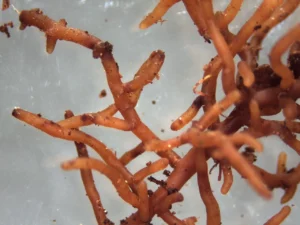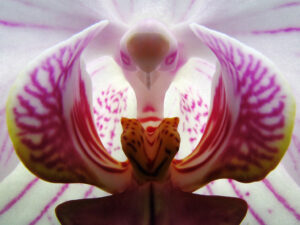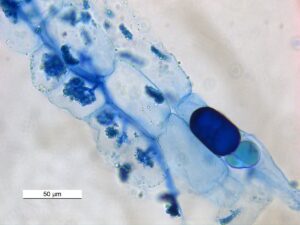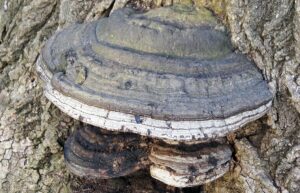Mycorrhiza, the meaning of the Mycorrhiza is “Fungal-Root”, meaning the type of fungus that is present in the root of plants to promote their growth and well being.
Here is the exclusive list of Mycorrhizal Fungi Examples
- Ectomycorrhiza
- Endomycorrhiza
- Orchid Mycorrhiza
- Arbuscular Mycorrhiza
- Ericaceous Mycorrhiza
- Arbutoid Mycorrhiza
- Ectotrophic Mycorrhiza
We will see in detail about the Ectomycorrhiza and Endomycorrhiza related examples in detail in this article.
Ectomycorrhiza:
Ectomycorrhiza or also called the ECM, is a very close interaction between the fungus and the plant in which both the plants and the fungus is being benefited for the prevalence and well-being of both the partners (Here the partners are the plant and the tree or plant root).
The working mechanism of the ecto mycorrhiza is that hyphae of the fungi do not get deep inside the cortical cells of the plant root during their association. The prevalence of this interaction between the plant and fungi is not that widespread and they are not that widely prevalence.

Image Credits- Pixabay
Ectomycorrhiza on an average is said to be prevalent only about 5 to 10%.
The fungal partner that are involved in this type of interaction, ectomycorrhiza is Ascomycota (Neurospora, Yeast, Cup fungi, Morels, Truffles, Penicillium, Powdery Mildews,Cladonia, Candida, Claviceps, Aspergillus) and Basidiomycota (Ustilago, Puccinia, Agaricus).

Image Credits- Wikimedia
The systemic hosts in the Ectomycorrhiza interaction are mostly conifers (Pine trees, douglas fir, ginkgo trees, Cedrus , and redwoods), but still few Non-conifers like hardwoods like oak and beech also show this interaction.
Endomycorrhiza:
As the endomycorrhizal interaction is much more invasive than the ectomycorrhizal interaction, endomycorrhizal interactions are more prevalent than ectomycorrhizal interaction.
Endomycorrhiza is much more prevalent as it ranges about 80% in the plant species. It can be grasslands to crops like common vegetables, flowering pants, fruit trees etc.
The working mechanism of the endomycorrhizal interaction is that the fungi that uses the endomycorrhizal interaction get into the plant cell so deeply that they reach the cortical cells and they tend to produce vesicles and arbuscules in the plant.
Glomeromycota shows the endomycorrhizal interaction, Glomeromycota include Gigaspora margarita, Geosiphon pyriformis, Scutellospora persica and the hosts are usually vascular plants.
Orchid Mycorrhiza:
From the name, we can say Orchid Mycorrhiza is something related to orchid plants. We know that plants perform a complex mechanism called photosynthesis for their survival for food.
Only by the process of photosynthesis, the plant can get enough nutrients for survival. Orchids generally can not undergo the photosynthesis process before the stage of seedings. Few orchids or non- photosynthetic organisms.

Image Credits- Flickr
The mycorrhiza fungi that is present in the root of the orchid plant provides enough sugars for their survival. The seed of the orchid will be in need of the invasion of the fungi to get the enough nutrients to germinate, and that’s how the germination takes place in orchids.
From the seed, the fungi takes the nutrients and the fungi grows as well.
Arbuscular Mycorrhiza:
Arbuscular Mycorrhiza is one of the best example and well known mycorrhizal interactions among all. The supply of the nutrient “Phosphorus” is facilitated in arbuscular mycorrhiza.

Image Credits- Wikimedia
As the name suggests, this type of mycorrhizal interaction supports the formation of arbuscular cells which remain as the site of exchange of nutrients like carbon, phosphorus prominently and water.
Zygomycota families like Rhizopus usually show arbuscular mycorrhiza type of interaction. The fungi are so dominant towards the plant that they will not be able to thrive without their plant host.
Ericaceous Mycorrhiza:
Ericaceous mycorrhizae is seen in the order of plants in Ericales. Like Arbuscular Mycorrhiza, they do not form any arbuscles for the nutrient exchange, but Ericaceous Mycorrhizae do invade the plant root cell and thus facilitates the uptake of mineral ions like Magnesium, Alumunium, Iron etc.
The fungi in this type of interaction do produce few structures called the hyphal coils which grow outside the root of the plant, showing there is an increase in the potent volume of the plant root.
Arbutoid Mycorrhiza:
Arbutoid mycorrhiza is often easily mistaken to be under ectomycorrhizae as their working mechanism is quite similar to ectomycorrhizae. The first part of the working mechanism is similar to ectomycorrhizae as they do not penetrate into the plant cortical cells.
Arbutoid mycorrhiza fungi attaches itself to the plant root and forms the fungal sheath for the nutrient exchange. But later on the hyphae of the fungi gets deep into the cortical cells of the plant as it works on its purpose, thus it is differentiated from the ectomycorrhiza.
Ectotrophic Mycorrhiza:
Ectotrophic Mycorrhiza is one of the simplest mycorrhizal interactions between the two partners, the plants and the fungi.
The Basidiomycota(Ustilago, Puccinia, Agaricus) and the Ascomycota (Neurospora, Yeast, Cup fungi, Morels, Truffles, Penicillium, Powdery Mildews,Cladonia, Candida, Claviceps, Aspergillus) families are involved in this fungi-plant interaction.
The fungi get their essential nutrients and sugars for the survival from the plant, and the plant gains nutrients and sugar for their survival from the fungi and both benefit from each other.
This type of association can be seen in the cooler environment rather than the warmer temperature.
How does mycorrhizal fungi work?
We know that the mycorrhiza is a type of fungi that aids the plant as well as gets benefitted on for itself.
There are two types of mycorrhiza, they are Ectomycorrhiza (Non-Invasive) and Endomycorrhiza (Invasive). Both these interaction work for the benefit of the plant as well as the fungi.

Image Credits- Wikimedia
The plant gets benefited as the fungi initiates and aid in the water and nutrient supply for the plant and the fungi is benefited from the plant as it supplies the essential growth and nutrient supply for the fungi to grow.
Ectomycorrhiza interaction is when the hyphae of the fungi do not get deep inside the cortical cells of the plant root during their association but still aids in the well-being of the plant.
Endomycorrhiza interaction is when the fungi that uses the endomycorrhizal interaction get into the plant cell so deeply that they reach the cortical cells and they tend to produce vesicles and arbuscules in the plant.
Benefits for plants:
- The plants can not get phosphorus and nitrogen that easily from the soil, this association will aid in getting nutrients like phosphorus and nitrogen and even water as the fungi mycelia has very tiny structures that reach out to the other end easily and facilitates the nutrient to the plant.
- The plants that are in relationship with such fungi are said to be more resistant to any soil borne diseases and they have different exposure to fungi and also they are less prone to diseases.
- The fungi aid in maintaining the soil pH, and quality thus making the plant lead a peaceful life rather than getting a stressful life due to the soil quality change.
Benefits for the fungi:
When the plant is supplied with the required materials for the photosynthesis process, it will eventually produces the nutrients and sugars such as glucose and sucrose. This can be easily again utilized by the fungi and aid in their growth and multiplication.
Also Read:
- Protists cell walls and bacteria cell walls
- Lactose fermenting bacteria examples
- Diffusion and pressure
- Spider examples
- Cytoskeleton and protoplasm
- Forearm anatomy
- Cytoplasm and protoplasm
- Why is dna replication semiconservative
- Aquatic ecosystem example 2
- Do all bacteria do photosynthesis

Hello, I am Sugaprabha Prasath, a Postgraduate in the field of Microbiology. I am an active member of the Indian association of applied microbiology (IAAM). I have research experience in preclinical (Zebrafish), bacterial enzymology, and nanotechnology. I have published 2 research articles in an International journal and a few more are yet to be published, 2 sequences were submitted to NCBI-GENBANK. I am good at clearly explaining the concepts in biology at both basic and advanced levels. My area of specialization is biotechnology, microbiology, enzymology, molecular biology, and pharmacovigilance. Apart from academics, I love gardening and being with plants and animals.
My LinkedIn profile-